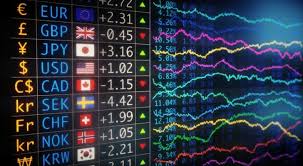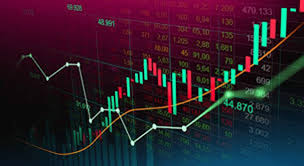Forex Trading Explained A Comprehensive Guide 1760400594

Forex Trading Explained: A Comprehensive Guide
Forex trading, or foreign exchange trading, is the act of buying and selling currencies on the global market. It’s one of the most significant financial markets in the world, with trillions of dollars being traded every day. In this article, we will explore the fundamentals of forex trading, the mechanisms behind the market, trading strategies, and how to get started. For more information on forex trading, visit forex trading explained FX Trading UZ.
Understanding Forex Trading
The Forex market is a decentralized marketplace where participants can exchange national currencies against one another. Unlike stock markets, forex operates 24 hours a day, five days a week, making it accessible for traders worldwide. The key aspects to understand about forex trading include currency pairs, exchange rates, and the factors that influence price movements.
Currency Pairs
In forex trading, currencies are traded in pairs. A currency pair consists of a base currency and a quote currency. For example, in the pair EUR/USD, the euro is the base currency, and the US dollar is the quote currency. The exchange rate indicates how much of the quote currency is needed to purchase one unit of the base currency.
Currency pairs are categorized into three main types: major pairs, minor pairs, and exotic pairs. Major pairs include the most traded currencies, such as USD, EUR, JPY, and GBP, while minor pairs consist of less commonly traded currencies. Exotic pairs involve a major currency and a currency from an emerging market.
Exchange Rates
Exchange rates fluctuate based on various economic factors, including interest rates, inflation, and geopolitical events. Traders analyze these factors to predict whether a currency will appreciate or depreciate. Exchange rates are typically expressed in terms of pips, which are the smallest price move that a given exchange rate can make based on market convention.
The Mechanics of Forex Trading
Forex trading involves several key players including central banks, financial institutions, corporations, and individual traders. The market operates through a network of banks and financial institutions, which facilitate trading between market participants.
Market Participants
1. **Central Banks**: They manage national economies and implement monetary policies. Their actions can significantly affect currency values.
2. **Commercial Banks and Financial Institutions**: They provide liquidity and facilitate transactions on behalf of clients and themselves.
3. **Corporations**: Businesses often engage in forex trading to hedge against currency fluctuations related to international trade.
4. **Retail Traders**: Individual traders, often using online platforms, participate in forex trading to profit from price movements.
How Trades Are Executed
Forex trading can be executed through various platforms, allowing traders to place orders for buying or selling currency pairs. The most common types of orders include:
- **Market Orders**: Buy or sell at the current market price.
- **Limit Orders**: Set a specific price to buy or sell.
- **Stop-Loss Orders**: Limits potential losses by automatically closing a trade at a specified price level.
Forex Trading Strategies
Successful forex trading often requires a well-thought-out trading strategy. Various strategies can be employed based on the trader’s style and market conditions, including:

1. Day Trading
This strategy involves executing trades within a single trading day. Day traders aim to capitalize on short-term price movements, often making multiple trades per day. They rely heavily on technical analysis and market news.
2. Swing Trading
Swing traders hold positions for several days or weeks to capture short- to medium-term market movements. This approach requires a good understanding of market trends and price patterns.
3. Scalping
Scalping is a high-pressure strategy focused on making small profits from minor price changes. Scalpers typically execute a large number of trades within a short time frame, often holding positions for just a few minutes.
4. Position Trading
This long-term strategy involves holding positions for weeks, months, or even years, based on fundamental analysis and overarching market trends.
Getting Started with Forex Trading
If you’re interested in getting started with forex trading, follow these steps:
1. Educate Yourself
Understanding the basics of forex trading, including market mechanics and trading strategies, is crucial. Consider taking online courses or reading trading books.
2. Choose a Reliable Broker
Selecting the right broker is essential for a successful trading experience. Look for a broker that offers a user-friendly trading platform, competitive spreads, and reliable customer service.
3. Create a Trading Plan
A well-defined trading plan helps you stay disciplined and focused. Clearly outline your trading goals, risk management strategies, and entry/exit criteria.
4. Practice with a Demo Account
Many brokers offer demo accounts that allow you to practice trading with virtual money. This is a great way to build your skills and test your strategies without risking real capital.
5. Start Trading
Once you feel confident, begin trading with real money. Start small and gradually increase your investment as you gain more experience.
Conclusion
Forex trading is a dynamic and potentially profitable venture that requires knowledge, patience, and discipline. By understanding market fundamentals, employing effective trading strategies, and continuously educating yourself, you can enhance your chances of success in the foreign exchange market.
Leave a reply